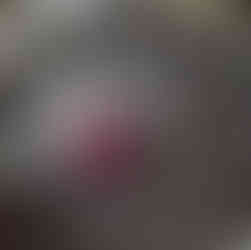Sunflower Seed Dye
- Wildroots Farm

- Sep 27, 2021
- 4 min read
We are so fortunate that Mother Nature creates such amazing things for us to use. Today I want to chat about the ability to dye fabric naturally with seeds from sunflowers. Not all sunflower seeds carry the proper pigment so you'll want to look for ones that have a pink/purple hue to them. This color will only be on the outside of the seed itself .

You can see here the seeds aren't your typical gray and white stripped. You are going to want seeds that have a deeper color since this is where the dye pigment is coming from.
This seed coloring can be found in varieties such as chocolate cherry, Chianti, Earth Walker or any darker color breed.
Sometimes even your regular Mammoth varieties will cross breed with another variety in your garden to create beautiful dark seeds.
I will walk you through the steps to create natural dye and apply it to a cotton bandana!

Start by prepping your cotton fabric. The cotton needs to be simmered in a fixative so the natural dye will adhere to the fabric. I do this by simmering my bandanas in Vinegar for 1 hour.
You will want 1 part white vinegar to 4 parts water.
Next, add all your cotton fabric into the pot and simmer for 1 hour. After it is done simmering, let cool completely in the liquid.
The cooling process is what allows the fixative ( vinegar) to set into he fabric fibers. So be sure you allow it to cool to room temp before removing and wringing out.

While your fabric is simmering or cooling, it's time to prepare the dye.
Start by removing all the seeds of the sunflower. The seeds do not have to be dry.
I use 1 cup seeds to 1 quart water. ( My dye bath was 4 cups seeds to 4 quarts water )
Once you have your seeds in water, Simmer them for a minimum of 30 minutes. You'll want to get your dye a deep color that almost looks black. I check periodically with a soup ladle to see how dark it's getting.

Once your cloth has simmered and cooled, pour out all the vinegar and wring out your fabric. Add the fabric back into the empty pot.
This pot will be where your fabric dying takes place so be sure you can live without it for 24 hours.

When your dye has reached the proper color, you will pour it over your fabric while straining out the seeds.
This can be done over the fabric pot itself or if its easier, you can strain it over any other bowl then add it into the dying pot.
Make sure all your fabric is covered. If your fabric is not covered you can either use weights ( like what you'd use for fermentation), clean rocks or mason jars filled with water ( with lids of course).
* If you decide to leave some fabric out of the dye it will create a unique tie dye effect .Those parts above the liquid will absorb the dye from below but not as much so they will be lighter.

Let you fabric sit in the dye bath over night. The longer it sits the darker it wil become.
Remember that the color you see is NOT the final color. Since this is a natural dye, your fabric is going to be lighter once dried.

After your fabric has sat in the dye bath over night, take it out and rinse in cold water until the water runs clear.
*you will notice the color will be much lighter once rinsed out.
After your fabric is rinsed either hang dry outside or put in your dryer on hottest setting to dry. Once again, you fabric will lighten up once dry.
Once your fabric is fully dry, iron it on the hottest setting ( cotton setting). This heat helps lock the color into the fibers.
Once finished with those steps, your fabric is now dyed and wash safe. I always suggest spot washing anything that has been naturally dyed because there is always a chance of bleeding or losing color.
If you'd like to add some exciting prints, use a permanent ink stamp pad and your favorite stamps to make a cute design on your dyed and dried fabric. Once you've finished with your stamps, iron again on hottest setting to set the ink into the fabric. Its very important to set it and let cool completely.
PLEASE REMEMEBR, This is an all natural method and bleeding can occur anytime throughout the life of the fabric.

Some Tips:
When you are done with making your dye, your seeds may still have some pigment left. I dry these seeds out on a cooking sheet and save them for later use. If you're done with the seeds, feed them to the birds as they still will have an intact kernel.
You may also save your left over dye in the refrigerator for up to 2 weeks to use on other projects.
Other types of fabrics may be used to dye but may need a different fixative or mordant bath prior to dying to help that color stick.
Naturally dyed fabric should be spot cleaned when needed.

Other wonderful natural dyes can be made from onion peels, avocado peels, beets, red cabbage and more. Never be afraid to experiment with natural dying. Its a beautiful and gratifying process!
HAPPY CRAFTING and Don't forget to STAY WILD!!





















Comments